A step-by-step guide on how to make labneh, the strained whole-milk yogurt spread popular in the Middle East and beyond. This recipe is both easy and truly authentic. Serve your labneh with blistered tomatoes, fresh cucumbers, good olive oil and za’atar. The possibilities are endless.
Labneh is traditionally served as part of a mezze platter or a standard Levantine breakfast table. It is often served alongside other classics like Taboon (flatbread), Kaak (Jerusalem bagels), and warm pita bread.

Table of Contents
What is Labneh
Labneh, which is sometimes spelled labaneh or labne, is a strained and thickened whole milk yogurt spread from the Levant (Palestine, Lebanon, Syria, and Jordan) and as such is an important and vital part of Levantine cuisine. The word labneh comes from the word laban, which is the anglicized spelling of yogurt in Arabic.
Some people consider it a type of soft cheese and it’s often labeled “labneh cheese”. I grew up eating the stuff slathered on Lebanese pita, with cucumbers and za’atar.
It is readily available for purchase at Middle Eastern grocers and will usually be sold by weight in the cheese case. Sometimes you’ll be offered a cow milk option (which is the mildest, and best if you’re new to it) or a cow and goat milk option (which is a bit more pungent).
These days, there are packaged creamy labneh tubs at many regular grocers and you’ll usually find them in the cheese case or where butter and cream cheese are sold. But there’s nothing stopping you from making your own. In fact, I recommend it. It’s such an easy and rewarding project.
Ingredients and Equipment
For the base recipe, you will need 2 ingredients! That’s it! Yogurt and salt (use kosher or sea salt). See the serving suggestions for topping inspiration.

You will also need cheese cloth (or cheesecloth bag), which you can find at kitchen supply stores, your local grocery store (check near the canning and preserving supplies) and of course online. You will also need a fine mesh strainer and bowl.
In order to make sure this recipe is as comprehensive as possible, I tested it with 3 types of yogurt:
- Plain Regular Yogurt (widely available and thinner in consistency, this yogurt is made through the process of fermenting milk with bacteria)
- 2% Greek Yogurt (made by straining traditional yogurt to reduce the moisture and whey content of the yogurt)
- Balkan-style Yogurt (thicker than plain yogurt because it has been fermented in smaller batches and once bacteria have been added to the milk it is placed in its final container and not disturbed until it’s ready to eat)

The best type of yogurt to use
I strained equal amounts of yogurt for an equal amount of time in the refrigerator (24 hours). To do this, I measured out 1 ½ cups of yogurt. I salted each one the same way and hung them the same way. You can see that the plain and Balkan style yogurts begin to drain away whey right away.
Whey is the liquid remaining after milk has been curdled and strained. It has many uses on its own so don’t throw it out. It can be used in place of water or milk in baking recipes. It can also be used to soak beans before boiling. It can also be used in fermentation recipes.

The results are in:
- The labneh spread made with plain yogurt lacked flavor and tanginess. It was creamy and but lacked depth. Definitely not my preferred option, but in a pinch, it’ll work just fine.
- The labneh made with Balkan-style yogurt was creamy, tangy, and had just the right texture you would expect (same as the labneh you can buy from a Middle Eastern grocer). It was spreadable and dippable. Not too thick or too loose. This is overall my favorite yogurt to make labneh with.
- The labneh made with Greek Yogurt was thick. Maybe even too thick to spread into a sandwich or on toast. It was delicious on its own, with a rich texture. It was difficult to use it as a dip without diluting it with some whey or water. Because it was so thick, crackers and veggie sticks would just break as you try to dip. It also had a slightly grainy texture (see image below). It is also the best bang for your buck as you’ll end up with more labneh in the end by weight.

| Plain 3% | Balkan 6% | Greek 2% | |
| Final Labneh Weight | 137 grams | 145 grams | 209 grams |
| Final Whey Weight | 182 grams | 174 grams | 110 grams |
| Texture | Creamy and soft | Creamy and soft | Thick and slightly grainy |
| Teste | Lacked tanginess | Balanced | Rich and tangy |
| Spreadability | Very spreadable | Very spreadable | Less spreadable |
In summary, if you are planning to make Labneh Balls, which need to be thick enough to hold their shape, I recommend using Greek yogurt (2%-5%). You can also use 0% Greek yogurt if you want to. If you are planning to use it as a spread in sandwiches or as a dip, I recommend using Balkan-style yogurt for its spreadable creamy texture. If Balkan-style yogurt is not available where you live, you can use Greek Yogurt, but consider reducing the straining time.
How to make this homemade labneh recipe

Step 1. Season. In a medium bowl, add the yogurt of your choice and kosher salt. Mix well to incorporate the salt (Image 1).
Step 2. Transfer. Set a fine-mesh strainer over a large bowl and line it with 2 layers of cheesecloth with enough overhang to allow you to tie a knot. Transfer the salted yogurt to the cheese cloth (Image 2).
Step 3. Strain. Cover the yogurt with the cheesecloth overhang. You can also make a knot if you prefer. Set the bowl in the refrigerator overnight (Image 3).
Step 4. Check consistency. The next day, you should see liquid whey in the bowl. This means your yogurt is thickening. Undo the knot and check the consistency. If the yogurt is still too loose for you, continue to strain for a few more hours. Do not strain for more than 24 hours (Image 4).

Step 5. Serve. Transfer the creamy spread to an airtight container or to a serving plate or small bowl and serve as you please. See the serving suggestions below.
Storage and Make Ahead
Homemade labneh can be made ahead of time. It should be stored in an airtight container used within 2 weeks.
If you have leftover labneh that has been dressed with a topping, store it in the fridge covered with plastic wrap and enjoy it within 1-2 days.
I personally don’t recommend freezing labneh, but it can be frozen for up to 6 months. It is best to freeze it in small balls or cubes for easy defrosting. The consistency may change when you do this, so bear that in mind.
Serving Ideas
Traditionally, labneh is served in a plate or bowl with a good drizzle of olive oil (extra-virgin olive oil is best!). It can be served cold from the fridge or at room temperature. Some people will add za’atar or lemon zest to it and serve it with:
- Pita chips
- Fresh vegetables (cucumbers, red peppers, tomatoes)
- Fresh herbs (mint, parsley and dill are popular)

A popular snack is a thin Middle Eastern pita that is split open, slathered with a thin layer of labneh stuffed with sliced cucumbers and rolled into a cigar shape. This type of sandwich is called “aaroos” or “3aroos” if you’re using common spelling, which translates to bride. Every Arab child ate these for lunch growing up.
Labneh can also be slathered on toast or Montreal bagels (just like you would with cream cheese). One of my favorite ways to serve it is with seasonal vegetables. Here are some serving suggestions:
- With blistered cherry tomatoes (or confit cherry tomatoes) and za’atar (just like my homemade hummus recipe)
- With poached eggs (just like my Turkish Eggs recipe)
- Turned into Shanklish (little balls of labneh rolled in spices)
- Add it to toast and garnish with veggies and herbs
- You can sweeten it with honey and slather it on toast topped with nuts and figs
- Serve it with preserved lemons and Shatta (Levantine chili sauce)
- Use it instead of yogurt to make a tzatziki-style dip or spread
- Use it in a cheesecake recipe (in place of the cream cheese)
Expert Tips
- Go traditional! Another way to strain the yogurt is to tie the cheesecloth to a wooden spoon and hang it over a tall container so that the yogurt in the cheesecloth ball is suspended in the air. Gravity will then help the whey drip down into the container.
- Zero-waste! Making labneh with yogurt that is nearing its best-before date is a good way to use it up in a new way.
- Unbleached Cheeseboth. If you can get your hands on it, I recommend using unbleached cheesecloth over standard white cheesecloth.

Recipe FAQs
Labneh is thicker and less tangy than sour cream. Because of the acidity in labneh, it can possibly be used in place of sour cream in baking recipes.
Cream cheese is made by adding lactic acid to pasteurized milk and cream, which lowers the pH and causes curds to form. The curds are then blended with stabilizers to create the cream cheese. Labneh on the other hand is made by straining yogurt. Both products have a similar consistency and labneh can be used in place of cream cheese. Experiment and see what works out for you.
Yes, if you make your own homemade yogurt, you can certainly strain it just like outlined in this recipe to make your own labneh.
Other Levantine Dips You Will Enjoy
Levantine Recipes
Levantine Recipes
Appetizers
Recipes
If you make this labneh recipe or any other Levantine Recipes on Urban Farm and Kitchen, please take a moment to rate the recipe ⭐⭐⭐⭐⭐ and leave a comment below. It’s such a help to others who want to try the recipe.
For more Urban Farm and Kitchen, follow along on Instagram, Facebook, and Pinterest, visit the Urban Farm Shop, or subscribe for new posts via email.
How to make Labneh (Easy and Authentic)
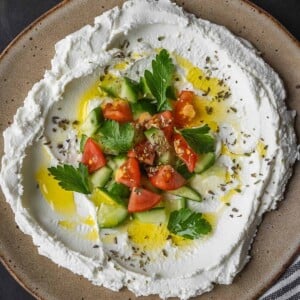
Equipment
- Cheesecloth
Ingredients
- 2 cups Yogurt – Use full fat Greek or Balkan Style yogurt.
- 1 tsp Kosher salt
Topping Options
- Extra virgin olive oil
- Za'atar
- Chili flakes
- Chili paste
- Chopped tomatoes
- Chopped cucumbers
- Herbs
Instructions
- In a small or medium bowl, add the yogurt of your choice and kosher salt. Mix well to incorporate the salt.
- Set a fine mesh strainer over a large bowl and line it with 2 layers of cheesecloth with enough overhang to allow you to tie a knot. Transfer the salted yogurt to the cheesecloth.
- Cover the yogurt with the cheesecloth overhang and twist to make a tight ball. You can also make a knot if you prefer. Set the bowl in the refrigerator overnight.
- The next day, you should see liquid whey in the bowl. This means your yogurt is thickening. Undo the knot and check the consistency. If the labneh is still too loose for you, continue to strain for a few more hours. Do not strain for more than 24 hours.
- Transfer the creamy spread to an airtight container or to a serving plate or small bowl and serve as you please.
Notes
-
- The labneh made with Balkan-style yogurt was creamy, tangy, and had just the right texture you would expect (same as the labneh you can buy from a Middle Eastern grocer). It was spreadable and dippable. Not too thick or too loose. This is overall my favorite yogurt to make labneh with.
-
- The labneh made with Greek Yogurt was thick. Maybe even too thick to spread into a sandwich or on toast. It was delicious on its own, with a rich texture. It was difficult to use it as a dip without diluting it with some whey or water. Because it was so thick, crackers and veggie sticks would just break as you try to dip. It also had a slightly grainy texture (see image below). It is also the best bang for your buck as you’ll end up with more labneh in the end by weight.
Nutrition
Nutrition information is automatically calculated, so should only be used as an approximation.
 Like this recipe? Rate & comment below!
Like this recipe? Rate & comment below!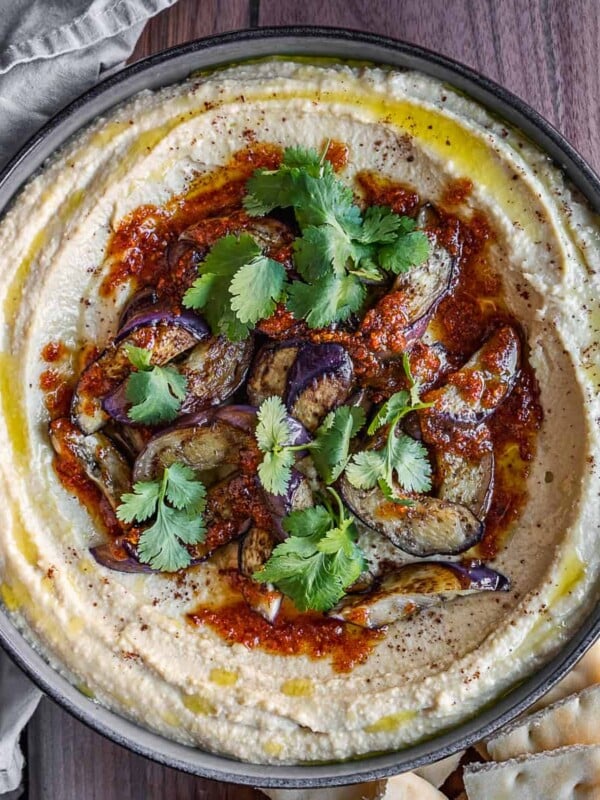


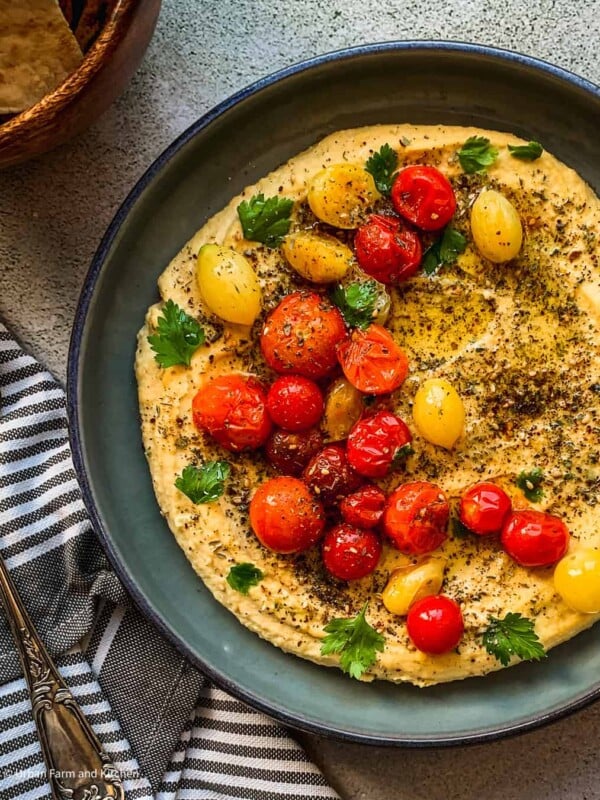
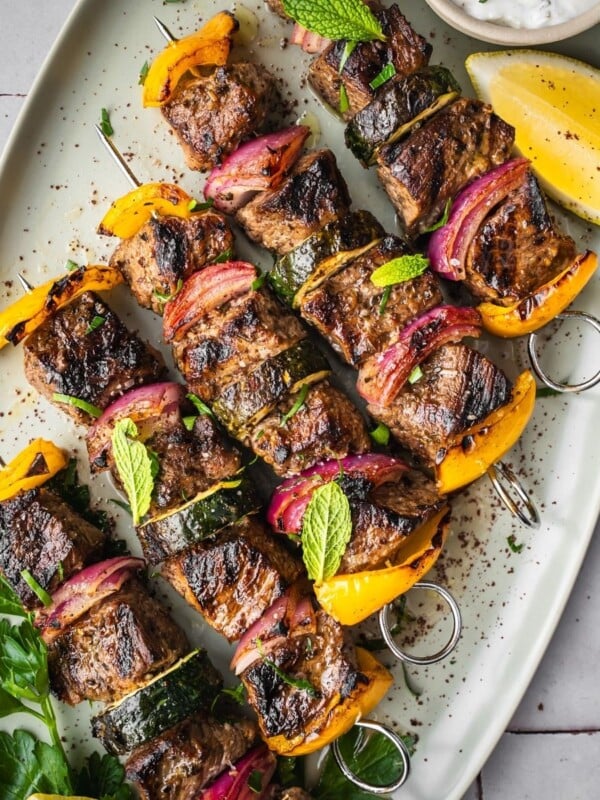

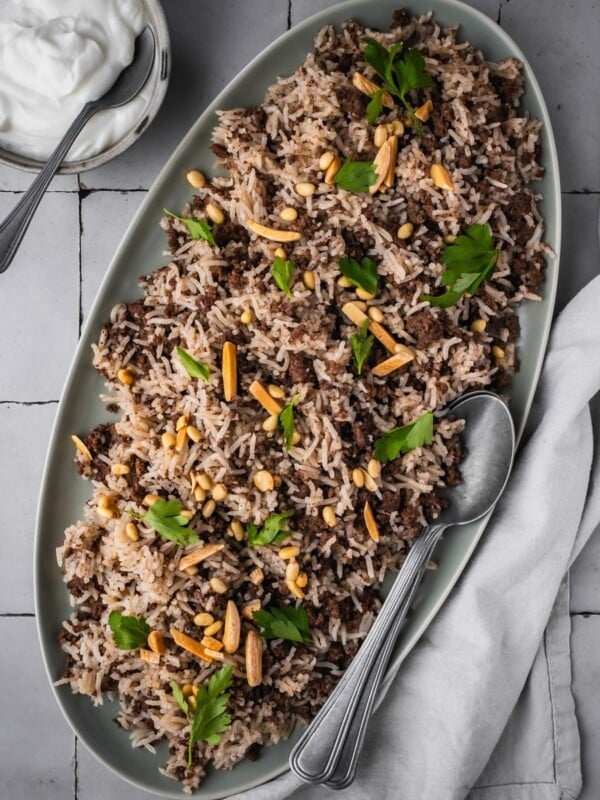
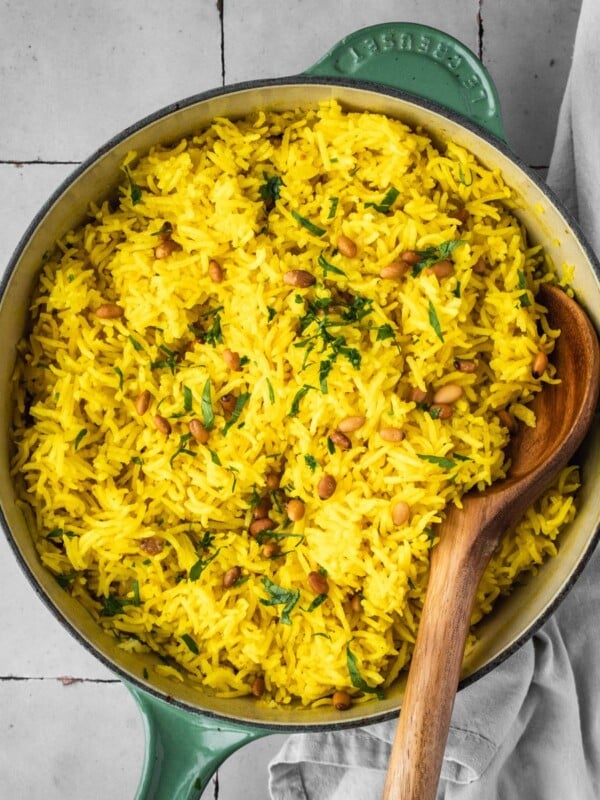








I was wondering if there was any way to make it with Greek Yogurt and make it sweet.
Greek yogurt is listed as an option. To make it sweet I would add some honey to the finished labneh.
Thanks for this🙏. The za’atar and the lebneh are both amazing. It’s been many many years since a dear Lebanese friend used to make this for us. So much better than the bought lebneh💜 🙏🍉💜
Thank you for your feedback, Francesca!
I tried this recipe with Greek yogurt and let it strain for 10 hours. It has a beautiful creamy consistency and tastes similar to Philadelphia cheese spread, but it’s softer and creamier. Aka much better.
I let the other half still in strainer to make the balls.
Thank you for sharing it, it was easy to make and the result is very delicious!
I’m glad you liked it!